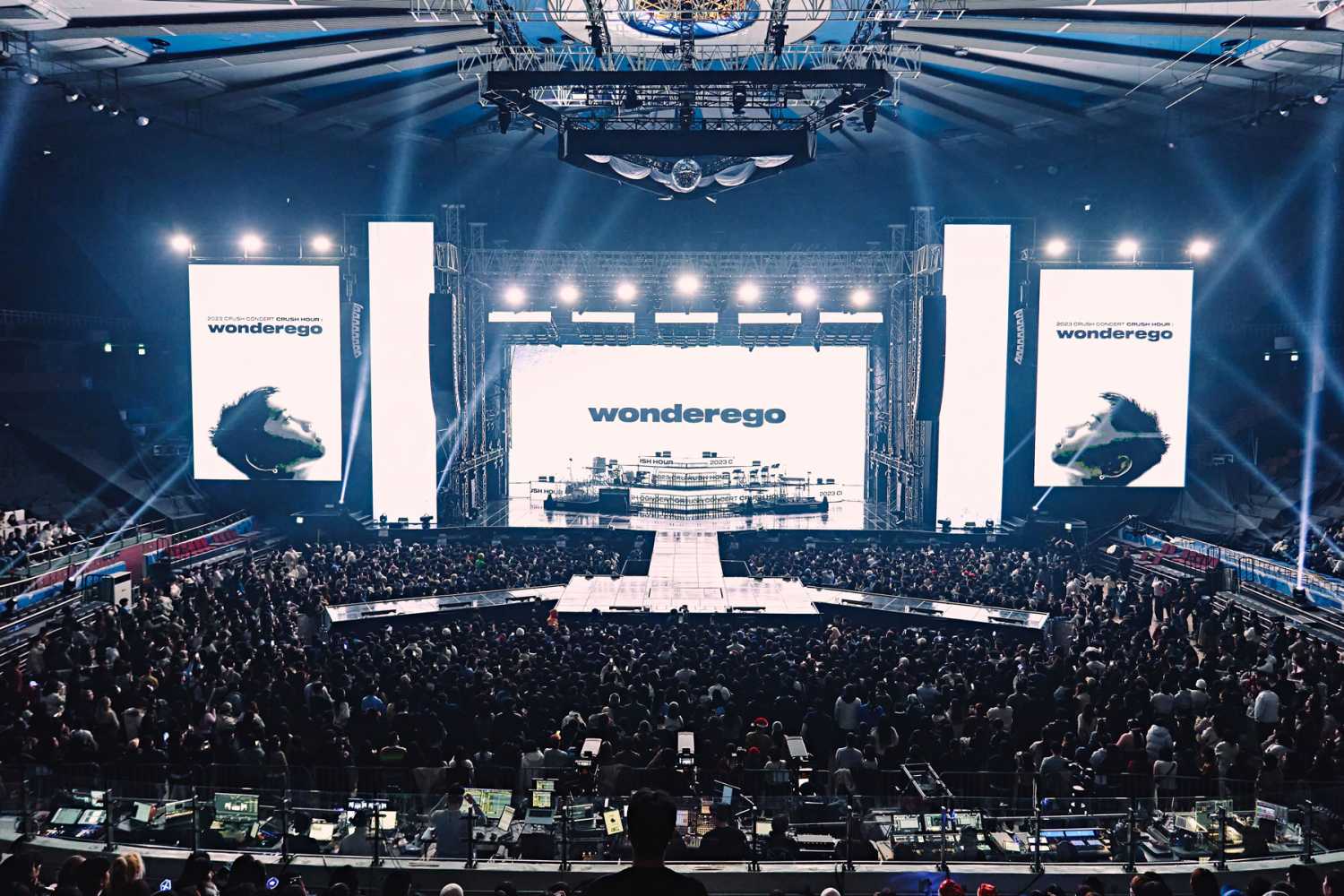Soyoun Lee controls Crush with grandMA3
- Details

For the first time, she chose to run the lighting control on a full grandMA3 system. Soyoun had used the grandMA3 console / hardware many times already (running in mode 2) and felt that this was a great time to ‘make the switch’, for which she prepared herself via online training videos and in-person training arranged via MA Lighting’s Asia Pacific base in Singapore.
Through the training, her grandMA3 knowledge increased exponentially and she realised that the platform’s many effective programming techniques were also triggering more creative ideas. The grandMA3 lighting set up on the Wonderego concerts comprised one grandMA3 full-size, one grandMA3 light, one grandMA3 processing unit XLone grandMA3 processing unit L and three grandMA3 8Port Nodes, controlling a total of 329 lighting fixtures that was a mixture of moving and static lights and LED fixtures and panels, all adding up to 17,685 parameters. Soyoun found herself using three main grandMA3 features - Recipes, Selection Grid and Phasers - as the backbone of her workflow, all of which enabled her to programme a complex and detailed show quicker, more efficiently and with greater creativity.
While Recipes required a steep initial learning curve, being persistent, she adapted to “this distinctive workflow” very naturally. The potency of a Cue Recipe became even more apparent when fine-tuning and adjusting cues she notes, utilising powerful tools like the effortless modification of fixture selection, quick adjustments to Phaser application and cue timings. “I firmly believe that the Cue Recipe workflow will continue to evolve and offer enhanced capabilities in the future,” she affirms.
Selection Grid, in offering a clear view of the selection order and structure, enabled a swift and logical selection technique mapped to the lighting rig, allowing the building of various scenes with dynamic values. “With numerous multi-instance fixtures, Selection Grid combined with MAtricks was instrumental in helping craft diverse looks that enhanced the overall show vibe.”
Phasers allowed the streamlining of intricate value changes in a straightforward manner. “Employing MAtricks and Selection Grid with one Phaser, I could easily generate a multitude of looks which simplified the process saving considerable time and effort,” she added.












